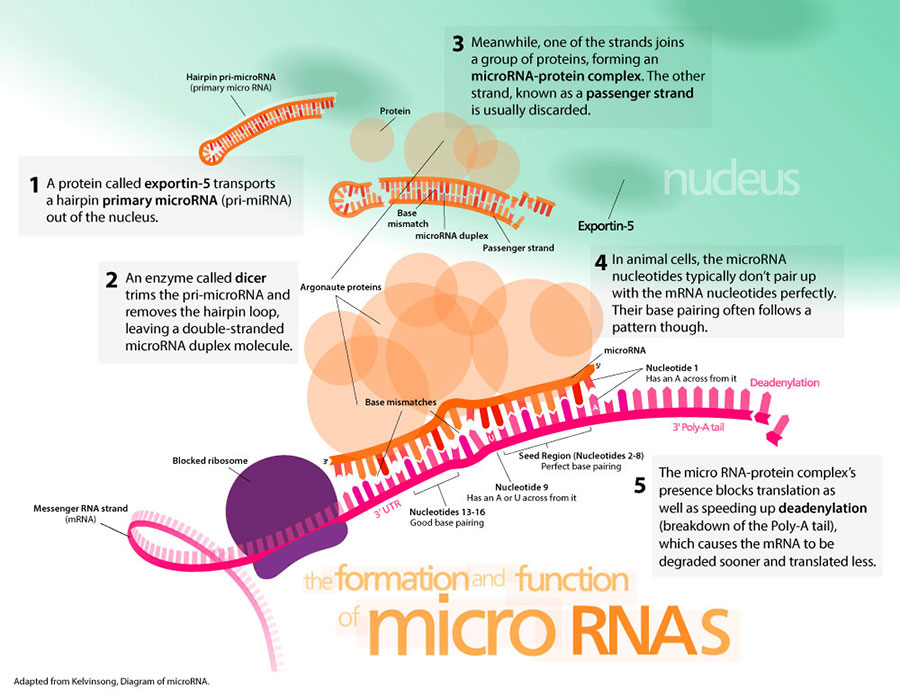 A small regulatory RNA called microRNA-155 appears to play a key role in the brain inflammation that helps foster Parkinson’s disease. This finding, using a mouse model, implicates microRNA-155 as both a potential therapeutic target and biomarker for this progressive neurodegenerative disorder, according to a University of Alabama at Birmingham study published Feb. 23 in The Journal of Neuroscience.
A small regulatory RNA called microRNA-155 appears to play a key role in the brain inflammation that helps foster Parkinson’s disease. This finding, using a mouse model, implicates microRNA-155 as both a potential therapeutic target and biomarker for this progressive neurodegenerative disorder, according to a University of Alabama at Birmingham study published Feb. 23 in The Journal of Neuroscience.
Parkinson’s disease, the most common neurodegenerative movement disorder, affects as many as 1 million Americans, more than multiple sclerosis, muscular dystrophy and Lou Gehrig’s disease combined. About 60,000 new U.S. cases are diagnosed each year, and thousands more go undetected.

Parkinson’s disease can progress undetected for years before symptoms appear. The UAB researchers, led by David Standaert, M.D., Ph.D., professor and chair of the UAB Department of Neurology, write that their results “suggest that microRNA-155 is involved early in Parkinson’s disease pathogenesis and is important for initiating the inflammatory response to alpha-synuclein.”
Widespread intracellular aggregates of alpha-synuclein protein, or α-syn, are a hallmark of Parkinson’s disease, along with progressive loss of neurons in a region of the brain called the substantia nigra pars compacta, or SNpc.
The mouse model used by the UAB team uses a virus to deliver a human α-syn gene to the brain, where it is overexpressed, leading to inflammation and neurodegeneration. The researchers examined whether this overexpression α-syn also changed expression of any microRNAs. MicroRNAs — which interact with messenger RNAs after their export from the cell nucleus — act to regulate gene expression in cells, and there are more than 1,300 distinct microRNAs at work in the brain.
The UAB researchers probed with an array of 84 inflammation- and autoimmune-associated microRNAs and found that microRNA-155 was significantly overexpressed in the SNpc, two weeks after viral delivery of the α-syn gene.
To see whether microRNA-155 was involved in inflammation and neurodegeneration, they tested mice with a deletion of the microRNA-155 gene. In the mouse α-syn model, this deletion prevented the increased expression two immune-cell markers — MHCII and CD68 — in the SNpc. Similarly, knock-out of the microRNA-155 gene prevented the α-syn-associated neurodegeneration that is seen six months later in wild-type mice challenged with α-syn.
The toll of Parkinson’s
|
Finally, the researchers tested isolated microglia, the resident macrophages that are the first line of immune defense in the brain. They found that the addition of α-syn fibrils to isolated microglia activated an immune response, as shown by increased expression of MHCII, a part of the inflammatory cascade, and inducible nitric oxide synthase, a pro-inflammatory enzyme. Microglia with the microRNA-155 gene deletion showed no increase in MHCII or inducible nitric oxide synthase, but a low-concentration transfection with a microRNA-155 mimic oligonucleotide restored the inflammatory response against α-syn fibrils in microglia with the microRNA-155 gene deletion.
“Our studies suggest,” the authors wrote, “that microRNA-155 is a key inflammation-initiating molecule that could be a viable target for Parkinson’s disease therapeutics.”
Authors of the paper, “MicroRNA-155 Regulates Alpha-Synuclein-Induced Inflammatory Responses in Models of Parkinson Disease,” are Aaron D. Thome, Ashley S. Harms, Laura A. Volpicelli-Daley and David G. Standaert, all of the Center for Neurodegeneration and Experimental Therapeutics, UAB Department of Neurology.
The work was supported by the American Parkinson Disease Association, and NIH grants F31 NS084722 and P20 NS092530.